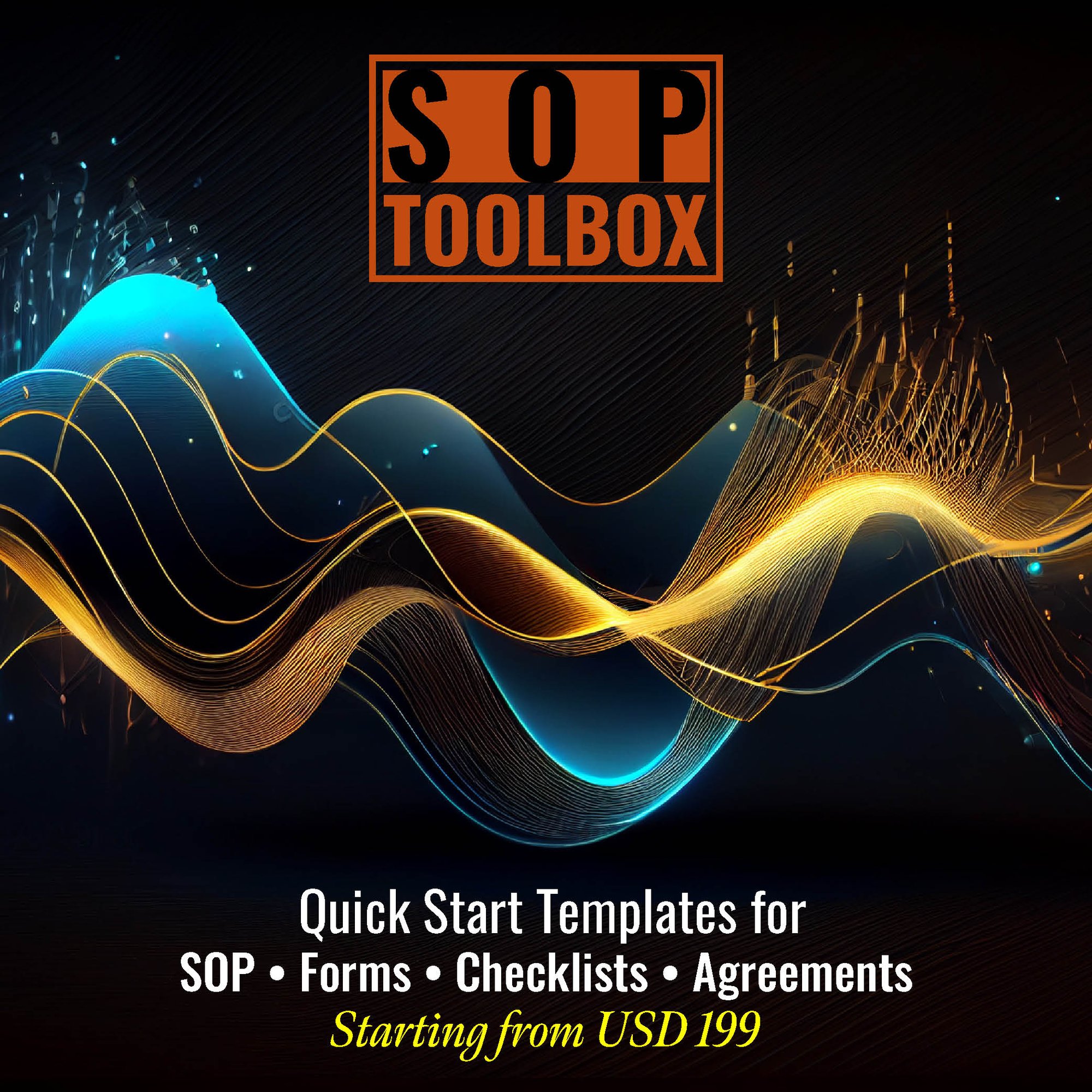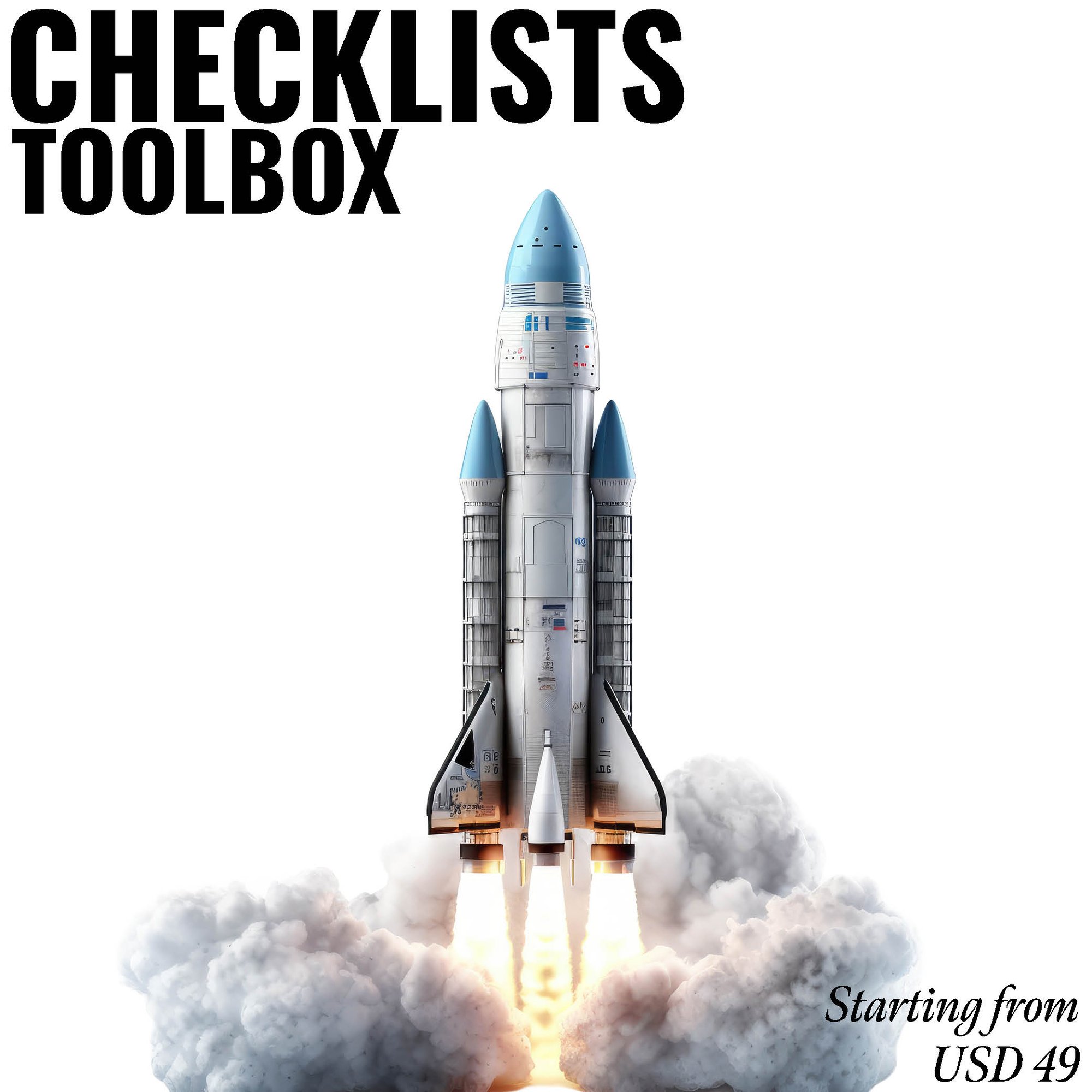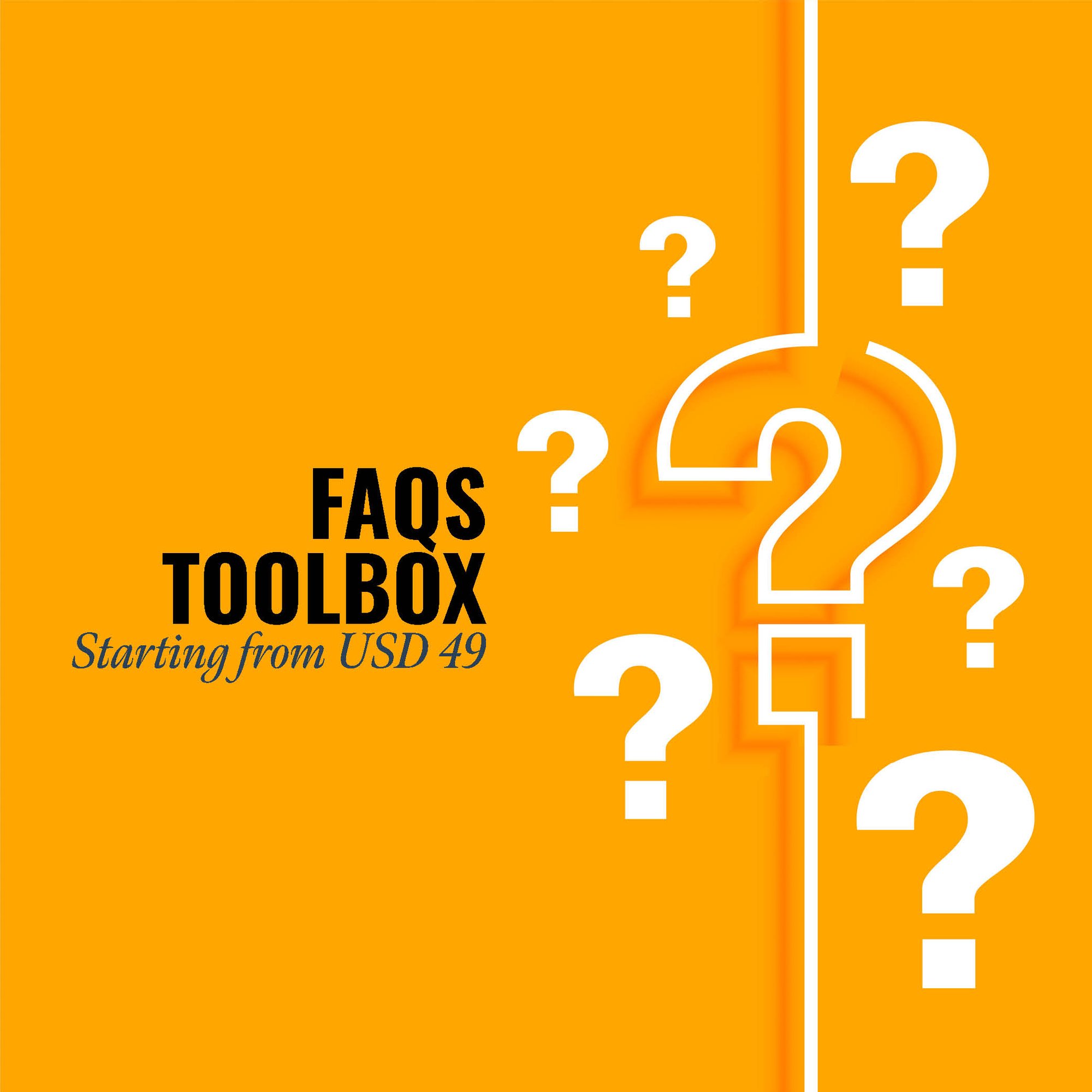An SOP (Standard Operating Procedure) manual for meat processing from carcasses presents several significant advantages in the food processing industry:
-
Food Safety: The manual outlines rigorous hygiene and sanitation protocols, ensuring the safe handling of meat and the prevention of foodborne illnesses. This is paramount for consumer health and regulatory compliance.
-
Product Consistency: SOPs provide detailed instructions for processing, cutting, packaging, and storing meat. This consistency results in uniform product quality, which is vital for customer satisfaction and brand reputation.
-
Operational Efficiency: Standardized procedures streamline production, reduce waste, and optimize resource utilization, leading to cost savings and increased production capacity.
-
Regulatory Compliance: Meat processing is subject to stringent regulations. An SOP manual helps ensure compliance with safety, labeling, and other industry standards, reducing the risk of legal issues and penalties.
-
Employee Training: The manual serves as an invaluable resource for training staff members, ensuring they are well-prepared to handle meat processing tasks safely and efficiently.
-
Quality Control: SOPs enable systematic quality control measures, reducing product defects and customer complaints, thereby maintaining the high standards expected in the meat processing industry.
In summary, an SOP manual for meat processing from carcasses offers advantages such as food safety, product consistency, operational efficiency, regulatory compliance, employee training, and quality control. These benefits are crucial for ensuring consumer safety, product quality, and the overall success of meat processing operations.
CLICK HERE to download the List of SOPs Document in PDF format. Please share this document with your clients, colleagues and senior officers.
Top 50 Standard Operating Procedures (SOPs) for Meat Processed from Carcasses
SOP-968-001: Standard Operating Procedure for Receiving and Inspection of Raw Meat
SOP-968-002: Standard Operating Procedure for Carcass Storage and Handling
SOP-968-003: Standard Operating Procedure for Meat Trimming and Deboning
SOP-968-004: Standard Operating Procedure for Grinding and Mincing Operations
SOP-968-005: Standard Operating Procedure for Seasoning and Flavoring
SOP-968-006: Standard Operating Procedure for Mixing and Blending of Meat Products
SOP-968-007: Standard Operating Procedure for Curing and Brining
SOP-968-008: Standard Operating Procedure for Smoking and Cooking
SOP-968-009: Standard Operating Procedure for Cooling and Chilling Processes
SOP-968-010: Standard Operating Procedure for Packaging and Labeling
SOP-968-011: Standard Operating Procedure for Storage of Finished Meat Products
SOP-968-012: Standard Operating Procedure for Quality Control Checks during Processing
SOP-968-013: Standard Operating Procedure for Cleaning and Sanitization of Equipment
SOP-968-014: Standard Operating Procedure for Pest Control in Processing Areas
SOP-968-015: Standard Operating Procedure for Allergen Control
SOP-968-016: Standard Operating Procedure for Employee Hygiene and GMPs
SOP-968-017: Standard Operating Procedure for Personal Protective Equipment (PPE)
SOP-968-018: Standard Operating Procedure for Metal Detection and Foreign Object Control
SOP-968-019: Standard Operating Procedure for Microbiological Testing
SOP-968-020: Standard Operating Procedure for Pathogen Control Measures
SOP-968-021: Standard Operating Procedure for Allergen Declaration on Labels
SOP-968-022: Standard Operating Procedure for Handling and Storage of Chemicals
SOP-968-023: Standard Operating Procedure for Waste Management
SOP-968-024: Standard Operating Procedure for Equipment Calibration
SOP-968-025: Standard Operating Procedure for Employee Training and Certification
SOP-968-026: Standard Operating Procedure for Documentation and Record Keeping
SOP-968-027: Standard Operating Procedure for Traceability and Recall Procedures
SOP-968-028: Standard Operating Procedure for Supplier Quality Assurance
SOP-968-029: Standard Operating Procedure for Facility Security Measures
SOP-968-030: Standard Operating Procedure for Emergency Response and Evacuation
SOP-968-031: Standard Operating Procedure for Product Sampling and Testing
SOP-968-032: Standard Operating Procedure for Shelf-life Testing
SOP-968-033: Standard Operating Procedure for Compliance with Regulatory Standards
SOP-968-034: Standard Operating Procedure for Customer Complaint Handling
SOP-968-035: Standard Operating Procedure for Product Development and Innovation
SOP-968-036: Standard Operating Procedure for Continuous Improvement Initiatives
SOP-968-037: Standard Operating Procedure for Employee Health and Wellness Programs
SOP-968-038: Standard Operating Procedure for Ethical Sourcing Practices
SOP-968-039: Standard Operating Procedure for Social Responsibility Guidelines
SOP-968-040: Standard Operating Procedure for Energy Conservation Practices
SOP-968-042: Standard Operating Procedure for Sustainability Initiatives
SOP-968-043: Standard Operating Procedure for Public and Environmental Outreach
SOP-968-044: Standard Operating Procedure for Crisis Communication
SOP-968-045: Standard Operating Procedure for Community Engagement
SOP-968-046: Standard Operating Procedure for Risk Management
SOP-968-047: Standard Operating Procedure for Legal and Regulatory Compliance
SOP-968-048: Standard Operating Procedure for Audits and Inspections
SOP-968-049: Standard Operating Procedure for Training on New Processes and Technologies
SOP-968-050: Standard Operating Procedure for Disaster Preparedness and Recovery
SOP ToolBox: If you are reading these lines, I am sure you are looking for Standard Operating Procedure guidelines or SOPs itself. In both the cases, searching in internet will not be yielding any great help. Because no company shares their SOP Development Process and certainly don’t share their SOP Documents. The best way to develop an SOP is creating one for yourself. At Fhyzics, we write SOPs day-in and day-out for companies across the globe including some of the Fortune 500 organisations. Our charge ranges from USD 5000 to USD 50000 depending upon the number of processes to be covered. Certainly, this is not affordable to small and mid-size organisations. Hence, we decided to create this SOP ToolBox to disseminate our 8-Step SOP Development Life-Cycle and best practices at an unbelievably low price.
I always say, writing an SOP is somewhere between art and science. So far you may be clueless on where to start and how to progress on an SOP? This will not be the case after you diligently go through this SOP ToolBox. We have summarised all our secrets here to get you started and to deliver a stunning SOP to your management.
This Indian industry includes companies primarily engaged in processing or preserving meat and meat by-products (except poultry and small game) from purchased meats. This industry includes companies primarily engaged in assembly cutting and packing of meats (i.e., boxed meats) from purchased meats. The industry includes 1,183 companies with 1,335 facilities.
1. Standard Operating Procedures (SOP) Manual for Accounts Department
2. Standard Operating Procedures (SOP) Manual for Finance Department
3. Standard Operating Procedures (SOP) Manual for Customer Service
4. Standard Operating Procedures (SOP) Manual for CRM Department
5. Standard Operating Procedures (SOP) Manual for Credit Department
6. Standard Operating Procedures (SOP) Manual for Treasury Department
7. Standard Operating Procedures (SOP) Manual for Human Resources (HR) Department
8. Standard Operating Procedures (SOP) Manual for Training Department
9. Standard Operating Procedures (SOP) Manual for Learning & Development Department
10. Standard Operating Procedures (SOP) Manual for Administration Department
11. Standard Operating Procedures (SOP) Manual for Front Office
12. Standard Operating Procedures (SOP) Manual for House Keeping
13. Standard Operating Procedures (SOP) Manual for Safety Department
14. Standard Operating Procedures (SOP) Manual for Security Department
15. Standard Operating Procedures (SOP) Manual for Facilities Management Department
16. Standard Operating Procedures (SOP) Manual for Vigilance Department
17. Standard Operating Procedures (SOP) Manual for Legal Department
18. Standard Operating Procedures (SOP) Manual for Information Technology (IT) Department
19. Standard Operating Procedures (SOP) Manual for Sales & Marketing Department
20. Standard Operating Procedures (SOP) Manual for Design & Engineering
21. Standard Operating Procedures (SOP) Manual for Procurement Department
22. Standard Operating Procedures (SOP) Manual for Production
23. Standard Operating Procedures (SOP) Manual for SRM Department
24. Standard Operating Procedures (SOP) Manual for Supply Chain Department
25. Standard Operating Procedures (SOP) Manual for Warehouse
26. Standard Operating Procedures (SOP) Manual for New Product Development Department
27. Standard Operating Procedures (SOP) Manual for Research and Development
28. Standard Operating Procedures (SOP) Manual for Quality Department
29. Standard Operating Procedures (SOP) Manual for Calibration Department
30. Standard Operating Procedures (SOP) Manual for Maintenance Department
-
Bacon, slab and sliced, made from purchased carcasses
-
Beef stew made from purchased carcasses
-
Beef, primal and sub-primal cuts, made from purchased carcasses
-
Bologna made from purchased carcasses
-
Boxed beef made from purchased carcasses
-
Boxed meat produced from purchased carcasses
-
Collagen sausage casings made from purchased hides
-
Cooked meats made from purchased carcasses
-
Corned meats made from purchases carcasses
-
Cured meats (e.g., brined, dried, and salted) made from purchased carcasses
-
Dried meats made from purchased carcasses
-
Frozen meat pies (i.e., tour tires) made from purchased carcasses
-
Hams, canned, made from purchased carcasses
-
Hams, preserved (except poultry), made from purchased carcasses
-
Hot dogs (except poultry) made from purchased carcasses
-
Lamb, primal and sub-primal cuts, made from purchased carcasses
-
Luncheon meat (except poultry) made from purchased carcasses
-
Meat canning (except baby, pet food, poultry), made from purchased carcasses
-
Meat extracts made from purchased carcasses
-
Meat products canning (except baby, pet food, poultry) made from purchased carcasses
-
Meats (except poultry), cured or smoked, made from purchased carcasses
-
Meats, fresh or chilled (except poultry and small game), frozen, made from purchased carcasses
-
Pastrami made from purchased carcasses
-
Pig's feet, cooked and pickled, made from purchased carcasses
-
Pork, primal and sub-primal cuts, made from purchased carcasses
-
Potted meats made from purchased carcasses
-
Processed meats manufacturing
-
Salted meats made from purchased carcasses
-
Sandwich spreads, meat, made from purchased carcasses
-
Sausage and similar cased products made from purchased carcasses
-
Sausage casings, collagen, made from purchased hides
-
Smoked meats made from purchased carcasses
-
Variety meats, edible organs, made from purchased meats
-
Veal, primal and sub-primal cuts, made from purchased carcasses
Meat consumption in developing countries has been continuously increasing from a modest average annual per capita consumption of 10kg in the 1960s to 26 kg in 2000 and will reach 37 kg around the year 2030 according to FAO projections. This forecast suggests that in a few decades, developing countries’ consumption of meat will move towards that of developed countries where meat consumption remains stagnant at a high level. The rising demand for meat in developing countries is mainly a consequence of the fast progression of urbanization and the tendency among city dwellers to spend more on food than the lower income earning rural population. Given this fact, it is interesting that urban diets are, on average, still lower in calories than diets in rural areas. This can be explained by the eating habits urban consumers adopt. If it is affordable to them, urban dwellers will spend more on the higher cost but lower calorie protein foods of animal origin, such as meat, milk, eggs and fish rather than on staple foods of plant origin. In general, however, as soon as consumers’ incomes allow, there is a general trend towards incorporating more animal protein, in particular meat, in the daily diet. Man’s propensity for meat consumption has biological roots. In ancient times meat was clearly preferred; consequently time and physical efforts were invested to obtain it, basically through hunting. This attitude contributed decisively to physical and mental development of humankind. Despite the growing preference in some circles for meatless diets, the Majority of us will continue eating meat. It is generally accepted that balanced diets of meat and plant food are most effective for human nutrition. Quantitatively and qualitatively, meat and other animal foods are better sources of protein than plant foods (except soy bean products). In meat, The essential amino acids – the organic acids that are integral components of proteins and which cannot be synthesized in the human organism – are made available in well balanced proportions and Concentrations. As well, plant food has no Vitamin B12; thus animal food is indispensable for children to establish B12 deposits. Animal food, in particular meat, is rich in iron, which is of utmost importance to prevent anaemia, especially in children and pregnant women. In terms of global meat production, over the next decade there will be an increase from the current annual production of 267 million tons in 2006 to nearly 320 million tons by 2016. Almost exclusively, developing countries will account for the increase in production of over 50 million tons. This enormous target will be equivalent to the levels of overall meat production in the developing world in the mid-1980s and place an vi Meat Processing Technology immense challenge on the livestock production systems in developing countries. The greater demand for meat output will be met by a further shift away from pastoral systems to intensive livestock production systems. As these systems cannot be expanded indefinitely due to limited feed availability and for environmental reasons, other measures must be taken to meet growing meet demand. The only possible alternatives are making better use of the meat resources available and reducing waste of edible livestock parts to a minimum. This is where meat processing plays a prominent role. It fully utilizes meat resources, including nearly all edible livestock parts for human food consumption. Meat processing, also known as further processing of meat, is the manufacture of meat products from muscle meat, animal fat and certain non-meat additives. Additives are used to enhance product flavour and appearance. They can also be used to increase product volume. For specific meat preparations, animal by-products such as internal organs, skin or blood, are also well suited for meat processing. Meat processing can create different types of product composition that maximizes the use of edible livestock parts and are tasty, attractive and nourishing. The advantage of meat processing is the integration of certain animal tissues (muscle trimmings, bone scraps, skin parts or certain internal organs which are usually not sold in fresh meat marketing) into the food chain as valuable protein-rich ingredients. Animal blood, for instance, is unfortunately often wasted in developing countries largely due to the absence of hygienic collection and processing methods and also because of socio-cultural restrictions that do not allow consumption of products made of blood. While half of the blood volume of a slaughtered animal remains in the carcass tissues and is eaten with the meat and internal organs, the other half recovered from bleeding represents 5-8 present of the protein yield of a slaughter animal. In the future, we cannot afford to waste such large amounts of animal protein. Meat processing offers a Suitable way to integrate whole blood or separated blood fractions (known as blood plasma) into human diets. Thus, there are economic, dietary and sensory aspects that make meat processing one of the most valuable mechanisms for adequately supplying animal protein to human populations, as the following explains:
- All edible livestock parts that are suitable for processing into meat products are optimally used. In addition to muscle trimmings, connective tissue, organs and blood, this includes casings of animal origin that are used as sausage containers.
Meat Processing Technology vii
- Lean meat is one of the most valuable but also most costly foods and may not regularly be affordable to certain population segments. The blending of meat with cheaper plant products through manufacturing can create low-cost products that allow more consumers access to animal protein products. In particular, the most needy, children and young women from low-income groups, can benefit from products with reduced but still valuable animal protein content that supply
Essential amino acids and also provide vitamins and minerals, in particular iron.
- Unlike fresh meat, many processed meat products can be made shelf-stable, which means that they can be kept without refrigeration either as (1) canned heat sterilized products, or (2) fermented and slightly dried products or (3) products where the low level of product moisture and other preserving effects inhibit bacterial growth. Such shelf-stable meat products can conveniently be stored and transported without refrigeration and can serve as the animal protein supply in areas that have no cold chain provision.
- Meat processing “adds value” to products. Value-added meat products display specific flavour, taste, colour or texture components, which are different from fresh meat. Such treatments do not make products necessarily cheaper; on the contrary in many cases they become even more expensive than lean meat. But they offer diversity to the meat food sector, providing the combined effect of nutritious food and food with excellent taste.
Research By : Eshwaran Murugappan
Keywords: sop, manual, policy, sop meaning, sop full form, standard operating procedure, full sop, user manual, sop is, user guide, instruction manual, owners manual, sample sop, operators manual, sop example,standard operating procedure examples, abbreviation sop, standard operating procedure sample, milk sop, sop document, sop process,m manual, operating procedures, operating process, sop meaning in hindi, standard procedure, sop standard operating procedure, sop top, sop writing, standard operating procedures manual, sop meaning in english, sample sop for mba, standard operating procedures examples in office, product manual, sample sop for ms, maintenance manual, sop security, sop in research, sop in business, whats sop, standard of operation, sop set, sop procedure, sop marketing,sop training, sop hotel, sop, sop meaning business, sop form, sba sop,sop software, help manual, sop it, army sop, company sop, sop sap, o m manual, standard operating procedure examples for small business, shop manual, sop manual, sop meaning in business, purpose of standard operating procedures, sop full meaning, standard operating procedure meaning, sop military, sop standard, sop meaning medical, hr sop, sop production, purpose of sop, sop management, warehouse sop, sales sop, sop pharma, sop manufacturing, sop creation, sop laboratory, ms sop, sop full form in hindi, sop front office, sop customer service, sop online, gmp sop, sop purchasing, sop pharmacy, sop safety, sop for project management,sample sop for australian student visa, sop meaning in tamil, sop system, best sop, sop up, sop in english, sop for mechanical engineering, sop for university,sop in malay, sop lab, sop for business analytics, sop model, sop in pharmacy, developing sops, standard operating procedure examples manufacturing, sop full form in retail,sop full form in medical, sop engineering, sop application, writing standard operating procedures, procurement sop, sop maintenance,standard operating procedure nhs, sop clinical trial, sop operations,sop in construction, operating procedures manual, standard operating procedure ppt, standard procedure meaning, sop ppt, a sop, sop document meaning, sop def, sop full form in safety, sop quality control, sop for college, sop quality, sop service, types of sop, sop for engineering management, sop document sample, benefit of sop, preparing sop, standard operating procedure in hindi, sop for visa, sop compliance, sop protocol, sop aviation, sop meaning in chat, standard operating process, sop meaning military, sop for business management, standard operating procedure software, sop list, sop medical, sop logistics, sop project, sop for it department, sop call center, standard work procedures, sba sop 50 10, sop meaning in logistics, standard operating procedure laboratory, test sop, sop sample for ms, drafting sop, sops meaning in tamil, sops meaning in telugu, sop automotive, standard operating system, sop cafe, sop slideshare, sop ap, sop bank, sop in retail, creating standard operating procedures, sop admin, document control sop, pharmaceutical sop,sop in pharmaceutical industry, statement of purpose harvard, sop examples for ms, quality assurance sop, sop in clinical research, nursing sop, sop for transportation, sop policies, sops are specific to a process, sop in hindi, standard operating procedure for warehouse picking, master sop, list of sop for pharma, pharmaceutical sop examples, types of standard operating procedures, retail sop, sample sop for ms in mechanical engineering, standard operating protocol,sop supply chain, system operating procedure, sop rules, example of sop in research, sop in food industry, sop for international business management, sop for hospitality management, sop for hr department, army sop example, sop standard operating, office sop, hr standard operating procedures, preventive maintenance sop, sop for purchase department, human resources sop, fire department sops, information technology sop, operating procedure example, administration sop,sop for retail store, indian sop, construction management sop, sop hotel front office, example sop document, standard and procedures,working sop, sop for maintenance department, sop hrd department,sop full form in hotel industry, sop full, sop for human resource management, laboratory sop examples, standard operating procedure for quality control, sop for ms in mechanical engineering, sop meaning army, security standard operating procedures, sop machine, sample sop for internship, sop for hotel management, sample sop for masters, qa sop, developing standard operating procedures, standard operating procedure document, product recall sop, marketing statement of purpose, it standard operating procedures, equipment sop, sop purpose example, sop shipping, sop for sales and marketing,converting pos to sop, workshop sop, standard operating procedure manufacturing, digital marketing standard operating procedures, following standard operating procedures, sop ki full form, sop for nursing procedures, an sop, purchase sop for manufacturing company, sop a, statement of purpose for mba marketing, full meaning of sop, sop for research internship, research sop sample,vendor qualification sop, sop purchasing and receiving, sop meaning in visa, sop for admission, standard operating procedure medical office, sop in industry, sop sales marketing, navy sop, project management standard operating procedures, sop it support, standard operating manual, security operating procedures, statement of purpose for international business, procurement standard operating procedures, communication sop, sop full form in pharma, minimum sop, sop health and safety, product sop, sop for marketing department, sop in medical terms, sales standard operating procedure, sop purchase order, department sop, customer service standard operating procedures, clinical sop, marketing standard operating procedure, sop standard operating procedure example, construction standard operating procedures, standard of operations procedures manual sample, sop for facility management, sop full form in education, standard operating procedure in food industry, visa sop,sop for business administration, company sop meaning, sop work, sop operating procedure, sop for summer internship in engineering sample, general administration sop, sop for administrative duties.
Our SOP Templates’ clients are from the following States and Countries:
Alabama, Alaska, Arizona, Arkansas, California, Colorado, Connecticut, Delaware, Florida, Georgia, Hawaii, Idaho, Illinois, Indiana, Iowa, Kansas, Kentucky, Louisiana, Maine, Maryland, Massachusetts, Michigan, Minnesota, Mississippi, Missouri, Montana, Nebraska, Nevada, New Hampshire, New Jersey, New Mexico, New York, North Carolina, North Dakota, Ohio, Oklahoma, Oregon, Pennsylvania, Rhode Island, South Carolina, South Dakota, Tennessee, Texas, Utah, Vermont, Virginia, Washington, West Virginia, Wisconsin, Wyoming.
Afghanistan, Albania, Algeria, Andorra, Angola, Antigua and Barbuda, Argentina, Armenia, Australia, Austria, Azerbaijan, Bahamas, Bahrain, Bangladesh, Barbados, Belarus, Belgium, Belize, Benin, Bhutan, Bolivia, Bosnia and Herzegovina, Botswana, Brazil, Brunei Darussalam, Bulgaria, Burkina Faso, Burundi, Cabo Verde, Cambodia, Cameroon, Canada, Central African Republic, Chad, Chile, China, Colombia, Comoros, Congo (Republic of the), Costa Rica, Croatia, Cuba, Cyprus, Czech Republic (Czechia), Democratic People’s Republic of Korea (North Korea), Democratic Republic of the Congo, Denmark, Djibouti, Dominica, Dominican Republic, Ecuador, Egypt, El Salvador, Equatorial Guinea, Eritrea, Estonia, Eswatini, Ethiopia, Fiji, Finland, France, Gabon, Gambia, Georgia, Germany, Ghana, Greece, Grenada, Guatemala, Guinea, Guinea-Bissau, Guyana, Haiti, Honduras, Hungary, Iceland, India, Indonesia, Iran, Iraq, Ireland, Israel, Italy, Jamaica, Japan, Jordan, Kazakhstan,Kenya, Kiribati, Kuwait, Kyrgyzstan, Lao People’s Democratic Republic (Laos), Latvia, Lebanon, Lesotho, Liberia, Libya, Liechtenstein, Lithuania, Luxembourg, Madagascar, Malawi, Malaysia, Maldives, Mali, Malta, Marshall Islands, Mauritania, Mauritius, Mexico, Micronesia (Federated States of), Moldova, Monaco, Mongolia, Montenegro, Morocco, Mozambique, Myanmar (Burma), Namibia, Nauru, Nepal, Netherlands, New Zealand, Nicaragua, Niger, Nigeria, North Macedonia (formerly Macedonia), Norway, Oman, Pakistan, Palau, Panama, Papua New Guinea, Paraguay, Peru, Philippines, Poland, Portugal, Qatar, Republic of Korea (South Korea), Republic of the Congo, Romania, Russian Federation (Russia), Rwanda, Saint Kitts and Nevis, Saint Lucia, Saint Vincent and the Grenadines, Samoa, San Marino, Sao Tome and Principe, Saudi Arabia, Senegal, Serbia, Seychelles, Sierra Leone, Singapore, Slovakia, Slovenia, Solomon Islands, Somalia, South Africa, South Sudan, Spain, Sri Lanka, Sudan, Suriname, Sweden, Switzerland, Syrian Arab Republic (Syria), Tajikistan, Thailand, Timor-Leste, Togo, Tonga, Trinidad and Tobago, Tunisia, Turkey, Turkmenistan, Tuvalu, Uganda, Ukraine, United Arab Emirates, United Kingdom of Great Britain and Northern Ireland, United Republic of Tanzania, United States of America, Uruguay, Uzbekistan, Vanuatu, Venezuela, Viet Nam, Yemen, Zambia, Zimbabwe.
Fhyzics supports organisations in developing the following documentations:
Standard Operating Procedures (SOPs), Work Instructions, Policies and Procedures, Process Flow Diagrams, Job Descriptions, Training Manuals, Employee Handbooks, Compliance Guidelines, Quality Assurance Manuals, Health and Safety Procedures, Risk Management Plans, Business Continuity Plans, Internal Audit Procedures, Incident Reporting Forms, Performance Management Guidelines, Change Management Procedures, Vendor Management Guidelines, Customer Service Protocols, IT Security Policies, IT Support Documentation, Disaster Recovery Plans, Operational Checklists, Data Management Policies, Confidentiality Agreements, Non-Disclosure Agreements, Employee Onboarding Procedures, Employee Exit Procedures, Performance Appraisal Forms, Employee Code of Conduct, Conflict Resolution Procedures, Product Development SOPs, Supply Chain Management Guidelines, Procurement Guidelines, Inventory Management SOPs, Shipping and Receiving Procedures, Production Scheduling SOPs, Maintenance Procedures, Equipment Calibration Documents, Environmental Compliance Documentation, Sustainability Policies, Customer Feedback Forms, Marketing Strategies, Advertising Guidelines, Brand Management Guidelines, Product Packaging SOPs, Laboratory Testing Procedures, Regulatory Compliance Documentation, Tax and Accounting Procedures, Contract Management Procedures, Legal Compliance Guidelines, Financial Reporting Procedures, Budgeting Procedures, Internal Control Procedures, Fraud Prevention Policies, Asset Management Guidelines, Purchase Order Procedures, Sales and Distribution Guidelines, Client Contracts, Customer Return Policies, Internal Communication Protocols, Vendor Evaluation Forms, Product Safety Standards, Workplace Health and Safety Standards, Public Relations Procedures, Social Media Management Guidelines, Crisis Management Plans, Employee Grievance Procedures, Privacy and Data Protection Policies, Digital Transformation Guidelines, Innovation Management Procedures, Continuous Improvement Guidelines, Strategic Planning Documents, Corporate Social Responsibility (CSR) Guidelines, Audit Trails and Records, Employee Training and Development Records, Succession Planning Documents, Talent Acquisition Procedures, Team Collaboration Protocols, Employee Benefit Plans, Workplace Diversity Guidelines, Time and Attendance Tracking, Payroll Procedures, Employee Leave Policies, Conflict of Interest Policy, Emergency Response Procedures, Environmental Impact Assessment Procedures, Transportation and Logistics Procedures, Inventory Control Forms, Warehouse Management Guidelines, Product Lifecycle Management SOPs, Customer Satisfaction Surveys, Third-Party Risk Assessment Guidelines, Technology Adoption Policies, Software Licensing Guidelines, Security Incident Response Procedures, Supply Chain Risk Management Policies, Product Recall Procedures, Food Safety Guidelines, Employee Wellness Programs, Workplace Ergonomics Guidelines.






.jpg?width=645&height=337&name=Standard%20Operating%20Procedure%20-%20SOP%20ToolBox%20(1).jpg)











